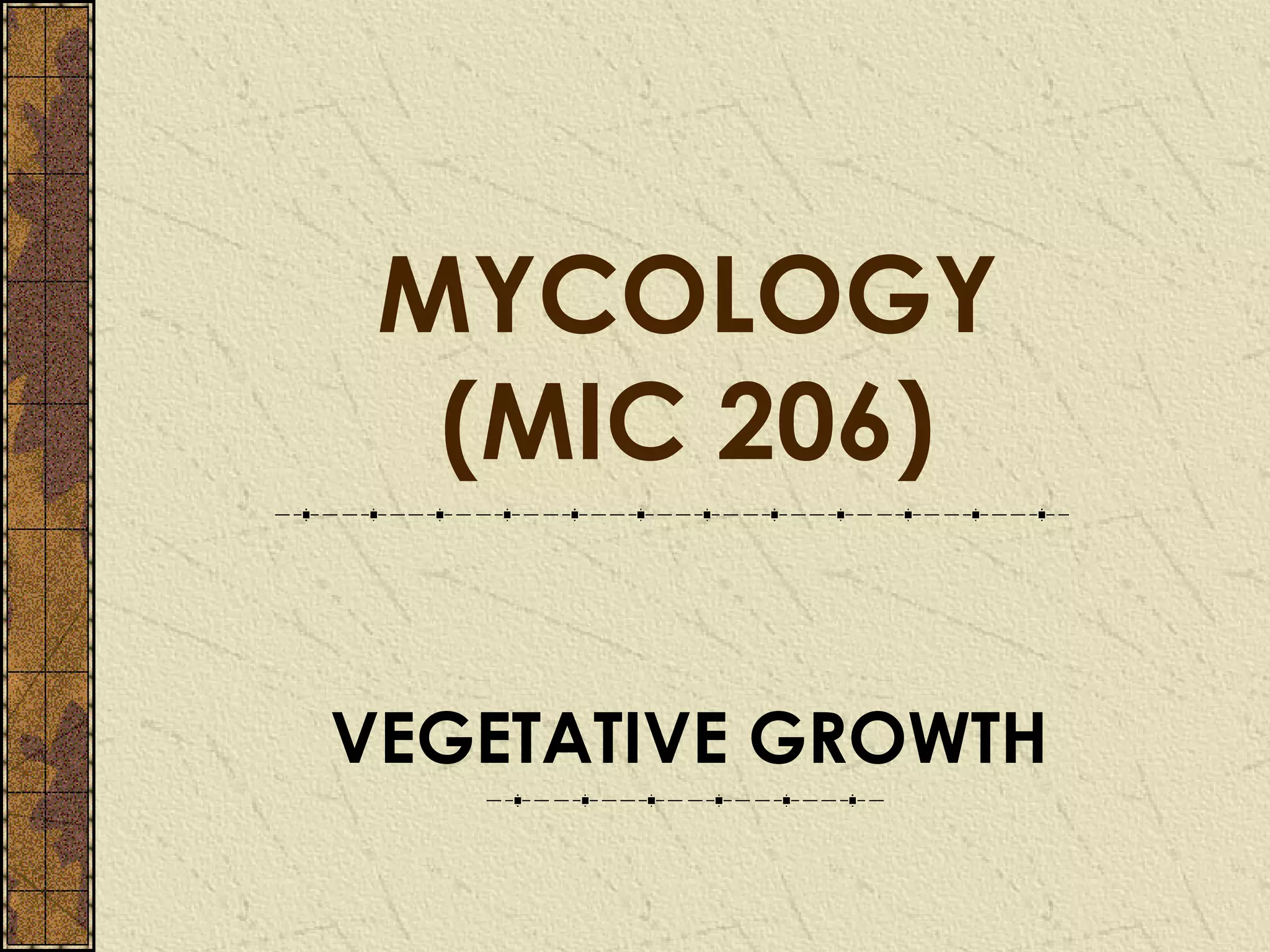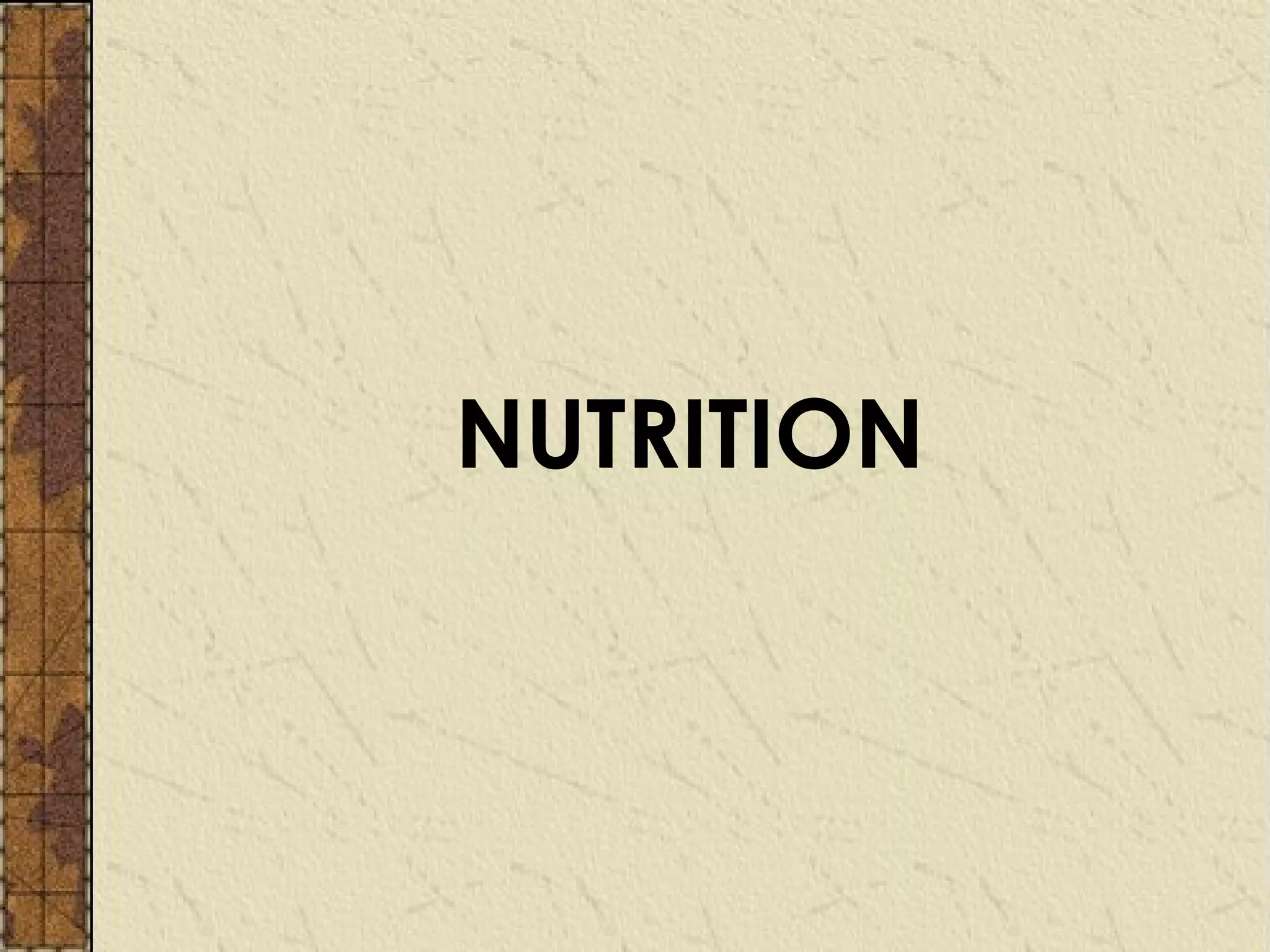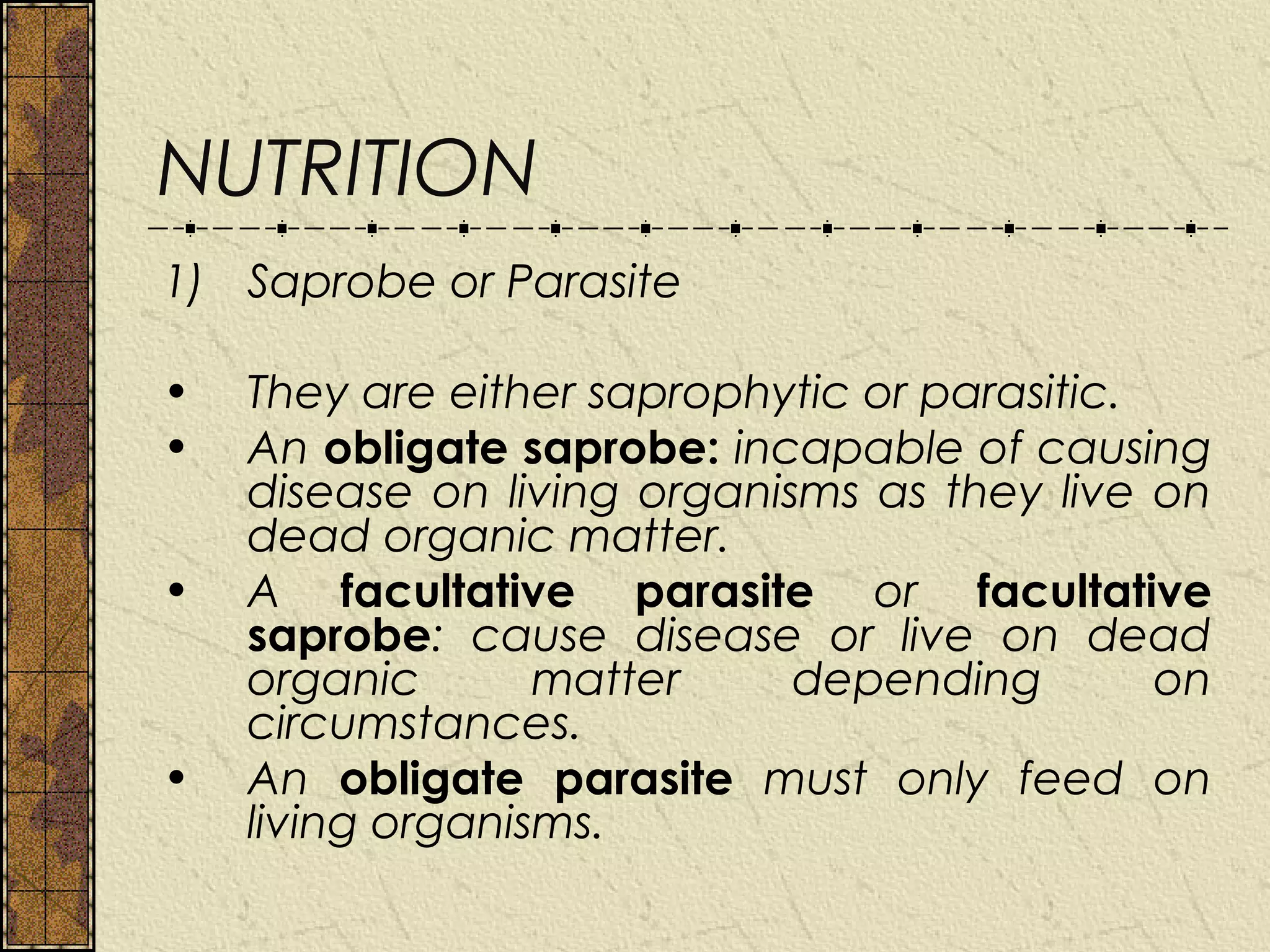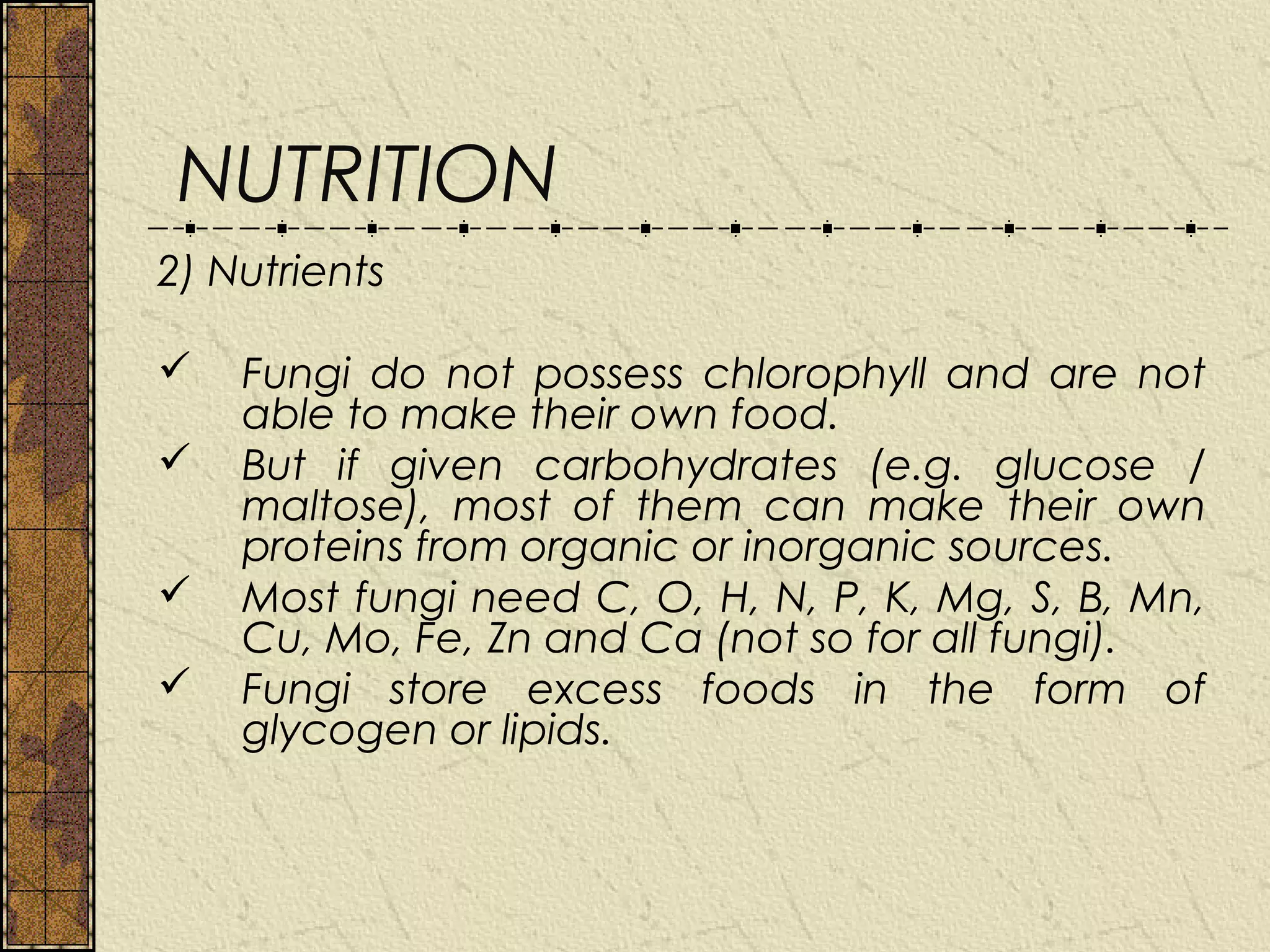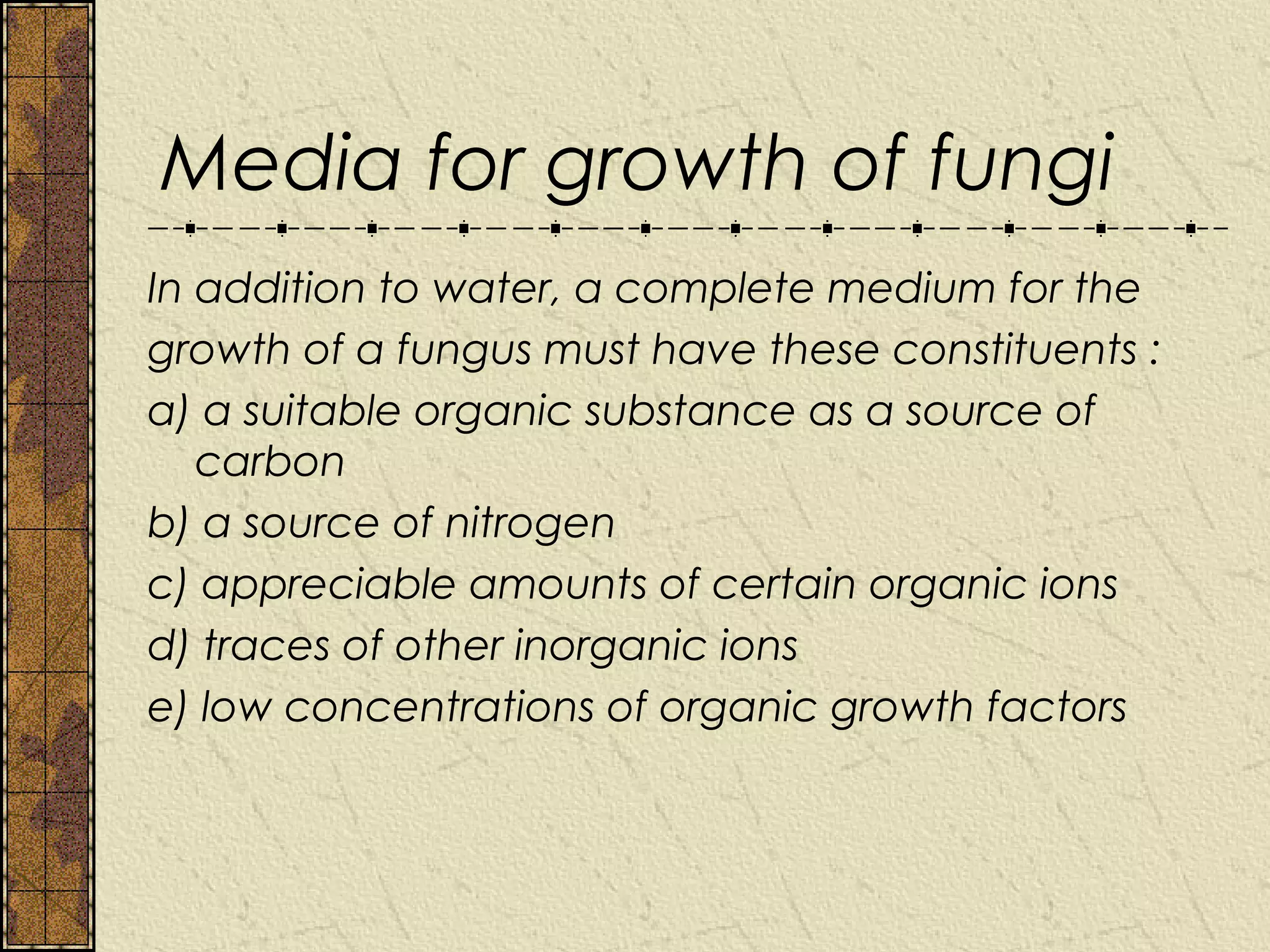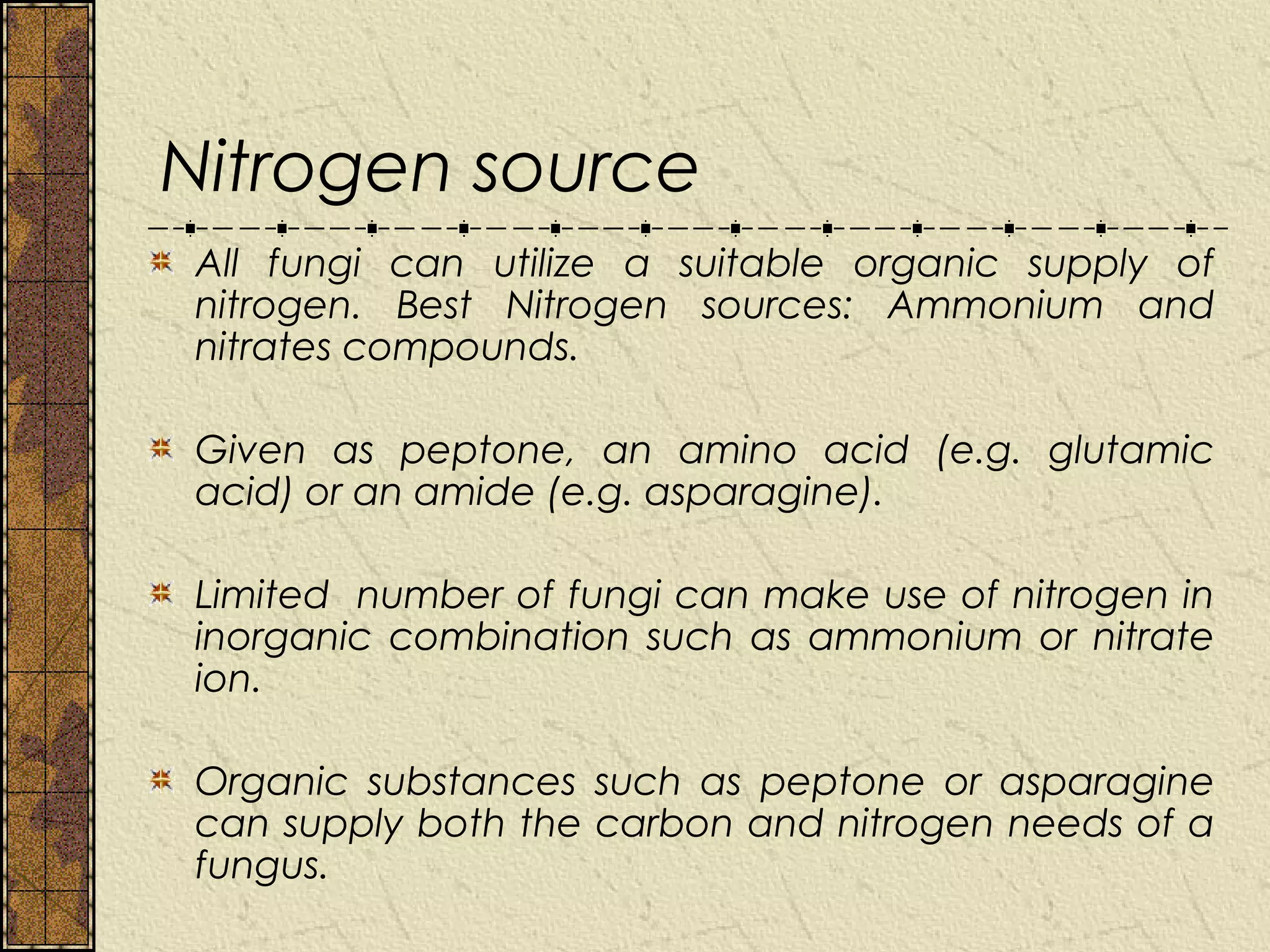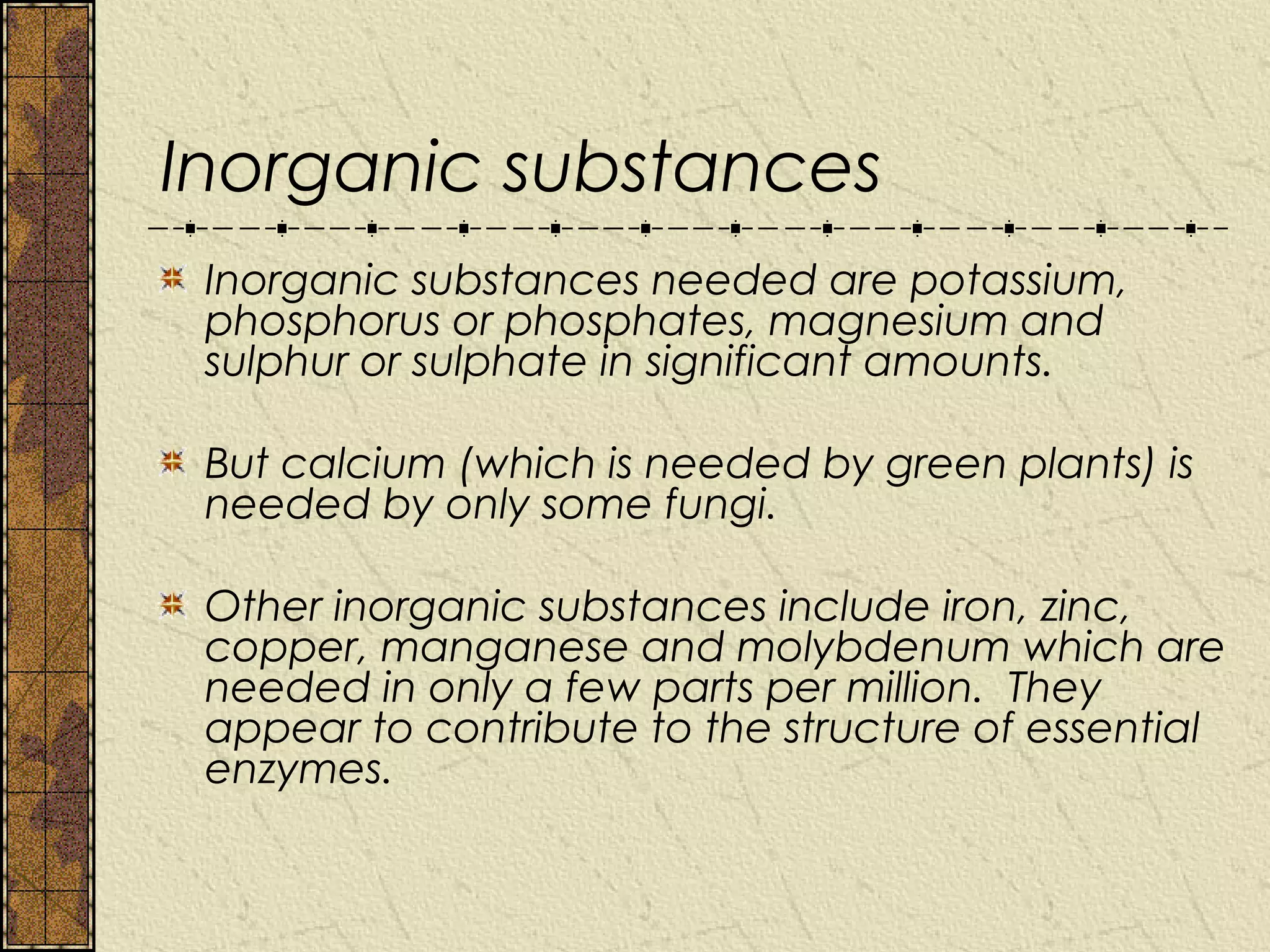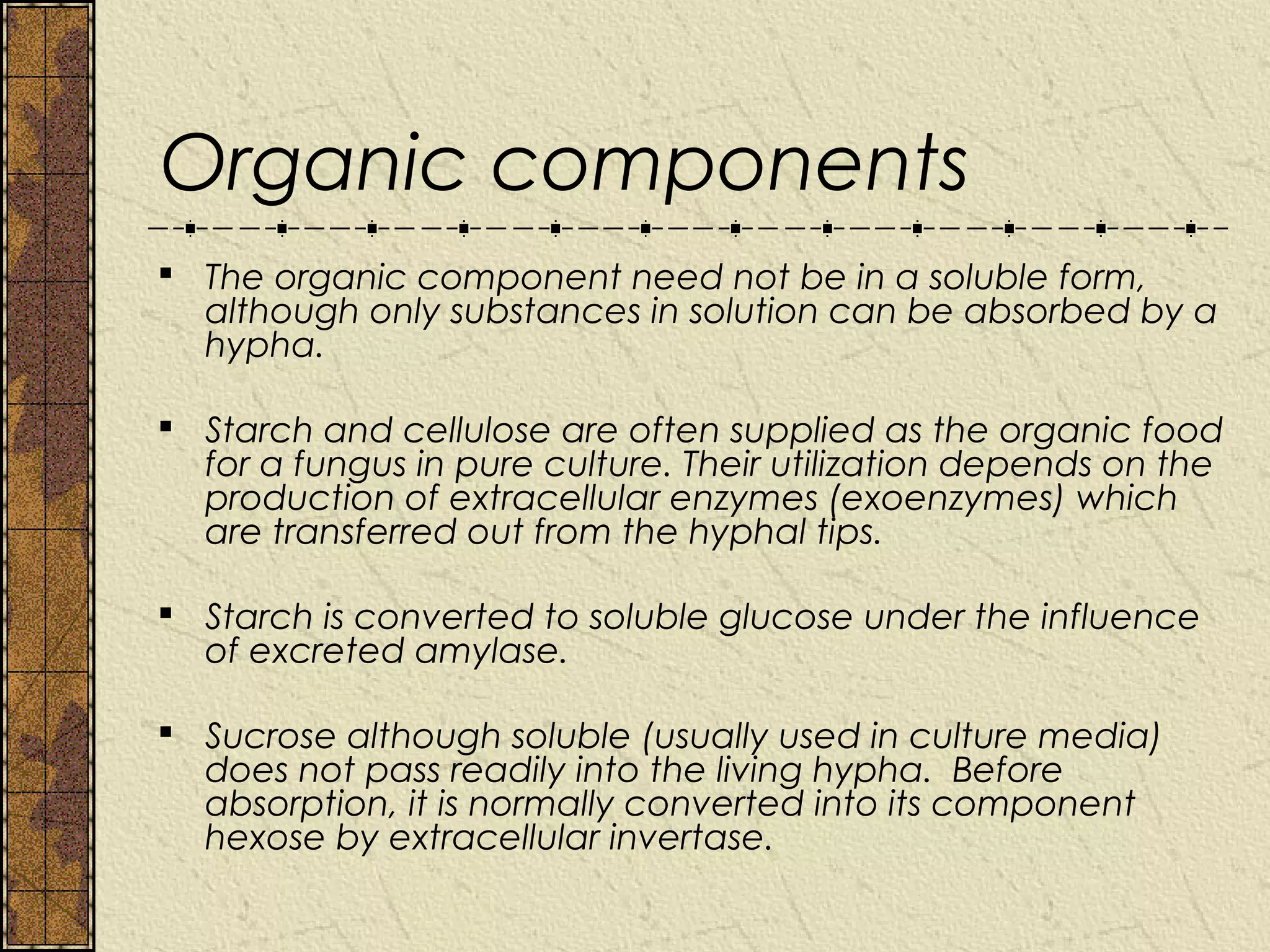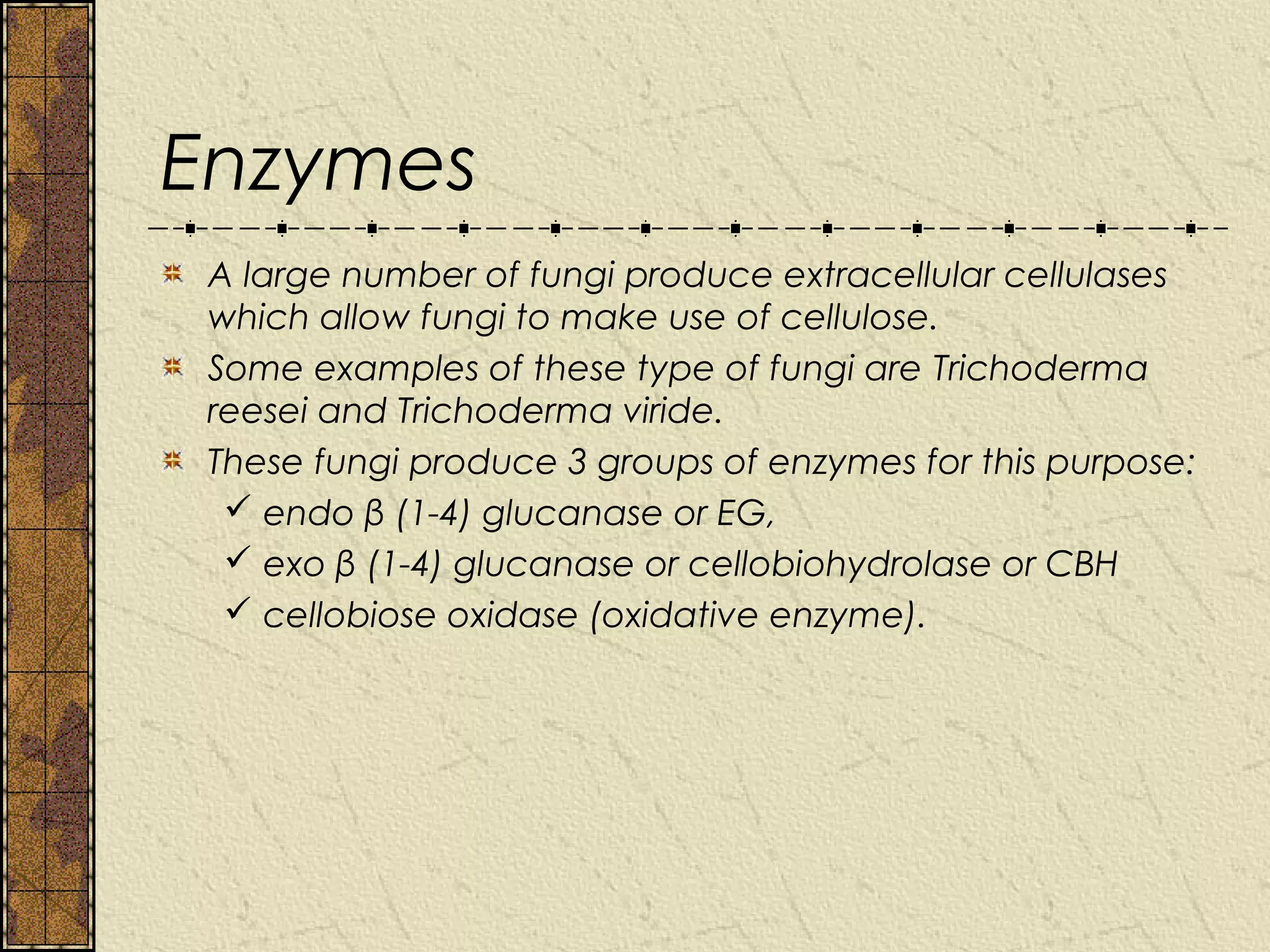This document discusses the nutrition and growth conditions of fungi. It explains that fungi can be saprophytic or parasitic and obtain nutrients from dead or living organic matter. The key nutrients fungi need are carbon, nitrogen, phosphorus, potassium, magnesium, and sulfur. Glucose and other sugars serve as the best carbon sources while ammonium, nitrates, and amino acids provide nitrogen. Fungi grow best between 0-30°C, at a pH of around 6, and do not require light for growth though some need it for sporulation.
